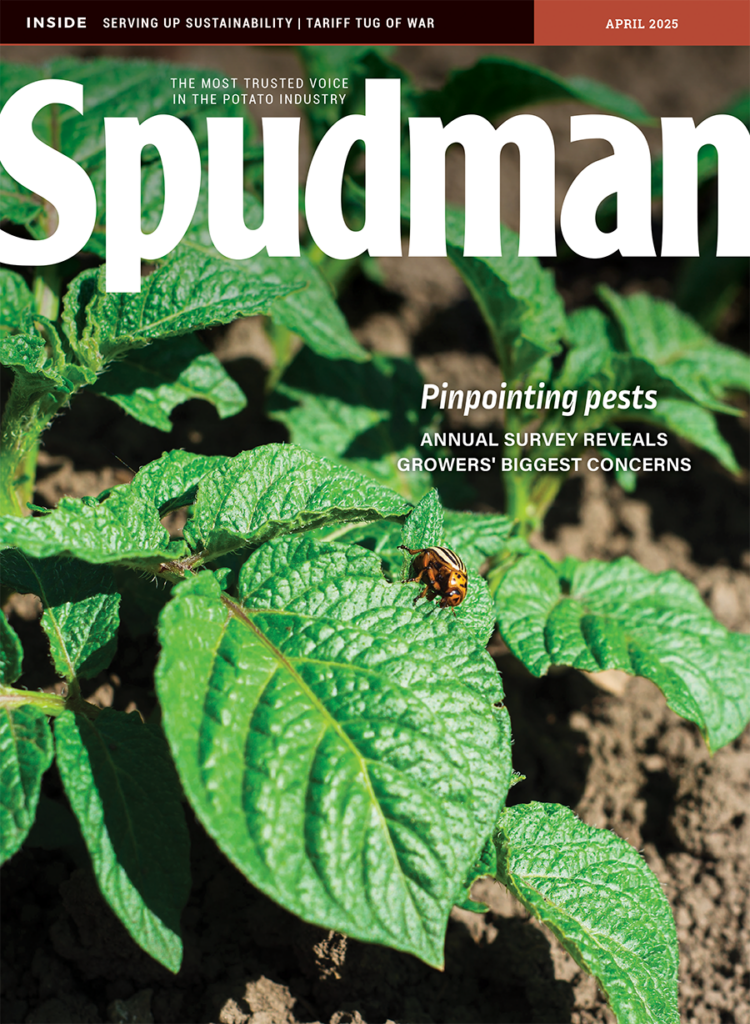Sep 25, 2017Valley Irrigation shares tips for evaluating center pivot systems
As growers prepare and work on harvest, many will also look at how well their center pivot irrigation systems are working. On its blog, Valley Irrigation wrote that checking for wear or failures in the devices and checking pressures and flows against the original package design, are essential but that growers should also evaluate the design of the sprinkler package itself.
From Valley Irrigation:
“There are many ways that the design of the package might not be optimal for your particular field or cropping system.
“One major example that we see on a regular basis is that of ‘streaking’ in the field. The overlap of the sprinkler-wetted pattern is key to a uniform application. Streaking occurs when that overlap is insufficient, creating dry ‘rings’ in the crop. With the rise in popularity of drones for checking your fields during the growing season, we are seeing more and more images like the following showing up; and, if caught soon enough, the issue may be remedied in time to mitigate yield losses.
“You can see that the field pictured above is filled with concentric rings where either the pivot irrigation system sprinklers were spaced too far apart to begin with, or there is too much tall crop interfering with the overlap of the sprinklers. This can lead to a significant percentage of loss in yield, especially in small fields such as this; but, even on larger systems where spacing has been designed to be wide in the first few spans, you still may see streaking on up to or more than half of the center pivot.
“Streaking like this can occur for a few reasons:
- If you observe that there are only a couple of concentric rings that are non-uniformly spaced on the pivot irrigation system, this is most likely caused by a plugged or non-functioning sprinkler on a well-designed system. Unplug, repair or replace the sprinkler.
- If you have sprinklers on drops, and you see uniformly spaced concentric rings, look to see where the sprinklers are in relation to the crop. If they are above the crop and there is no interference, then the package needs to be redesigned to reduce the spacing between the sprinklers. If the sprinklers are down in the crop, then there is too much interference with the plants. In this case, raise those sprinklers that are showing signs of streaking above the crop canopy.
- If you observe random dry or overly wet spots in the field, but they are not concentric based on the path of the center pivot, you are likely looking at a soil type issue involving water holding or infiltration capacity. If this is a prevalent issue, work with your crop consultant and pivot irrigation system dealer to see if a variable rate irrigation (VRI) system might be the answer.
“If you are working with your dealer to design a new sprinkler package for your pivot irrigation system, here are some things to consider to avoid streaking issues:
- Study the specifications of the sprinkler choices that you have. Understand the spacing limitations and don’t exceed them.
- Know your potential cropping systems over the lifespan of the pivot irrigation system sprinkler package. If your rotation includes tall crops, consider keeping the sprinklers mounted at a level that is above the crop to ensure sufficient overlap.
- Drop the sprinklers down into the crop for an effective way to limit wind and evaporation losses, but be aware that the throw of the sprinkler may be reduced due to crop interference. Consult your irrigation dealer for a recommendation on how much to drop the spacing of the sprinklers.”














